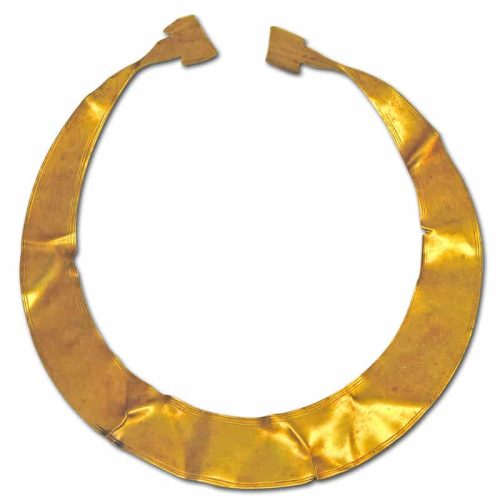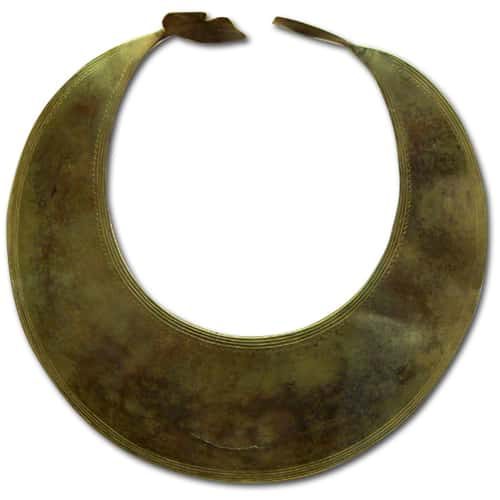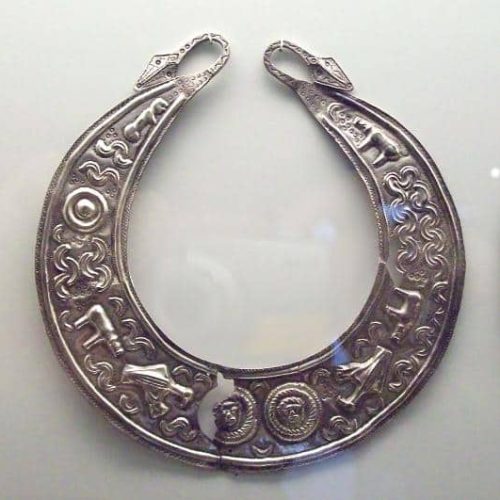


A lunula is an ornament that was in fashion over the entire Bronze Age and into the Iron Age. It is named after the Latin word for moon luna (lunula literally means: little moon) because of its crescent shape. Usually, it is made from a thin sheet of bronze or gold and occasionally silver. The crescent often terminates in square or rounded plates that are twisted to right angles to the rest of the item. When these terminals are brought together and fastened the crescent forms a conically shaped round tube that rests on the base of the neck.
Lunulae are often chased with decorative motifs common on Bronze Age pottery: zigzag lines, triangles, and diamond (kite) shapes. Later embossed motifs started to appear.
Most lunulae have been found in Ireland but examples have been unearthed from Germany to Portugal as well.



Sources
- An Illustrated Dictionary of Jewelry. Newman, Harold. Thames & Hudson Ltd. London, 1981.
- 7000 Years of Jewellery, Various Authors, edited by Hugh Tait, British Museum Press, London, 1986.